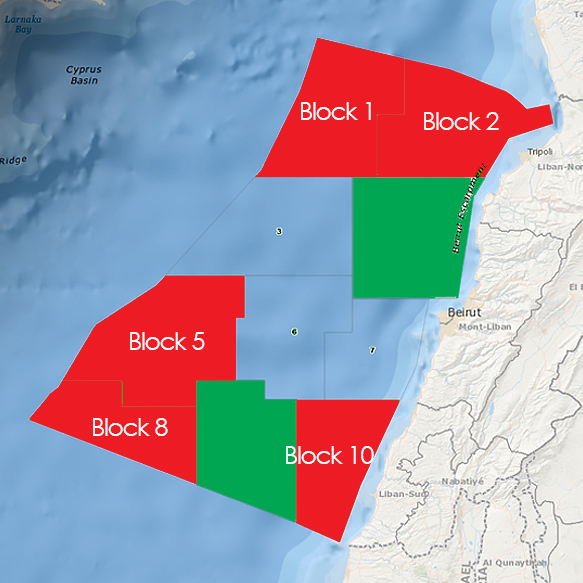The Lebanese government has approved the opening of the country’s much-anticipated 2nd offshore licensing round. Interested companies will be expected to submit their bids by 31 January 2020.
The Lebanese Petroleum Administration (LPA) detailed a total of five offshore blocks to be offered in the 2nd round – Blocks 1,2, 5, 8 and 10. They indicated that tenders will not be preceded by a separate pre-qualification process, as was the case in the 1st round, in order to streamline the process and allow oil companies additional time for evaluation. Provisional block winners are expected to be announced during April 2020.

Map source: Spectrum
The legal framework for the second round has largely remained unchanged from the first but pre-qualification criteria have been slightly loosened to encourage greater participation.
Following the prominent Zohr discovery, which opened up a different play type to those of the Leviathan and Aphrodite discoveries, much of the eastern Mediterranean has seen a renewed focus of exploration activity. With this increased level of interest, Lebanon’s 2nd offshore licensing round provides a timely opportunity to gain access to favourable acreage in this emerging region.
ExxonMobil, along with partners Qatar Petroleum, recently announced a multi-TCF discovery of gas in the Glaucus-1 well offshore Cyprus. The well encountered a gas-bearing reservoir of ~133 metres with in-place resources estimated to be 3-5 TCF. This discovery brings the total announced gas reserves in the region up to 70 TCF.
Spectrum has acquired and interpreted over 5,000 km² of modern Multi-Client 3D data offshore Lebanon, covering 3 of the 4 blocks anticipated to be included in the 2nd licensing round. Through this data, Spectrum has shown that the Early Miocene reservoir indicates a string of three-way dip closed and one-way fault closed structures that range in size from 20 to 50 km², capped by thick Late Miocene mudstones. These are similar in size to the Tamar structure (9 TCF) to the south but less highly faulted.
For more information on the 2nd licensing round and the hydrocarbon prospectivity offshore Lebanon, check out Spectrum's exclusive interactive map here.
KeyFacts Energy Lebanon country page l KeyFacts Energy Industry Directory: Spectrum Geo
 KEYFACT Energy
KEYFACT Energy